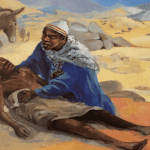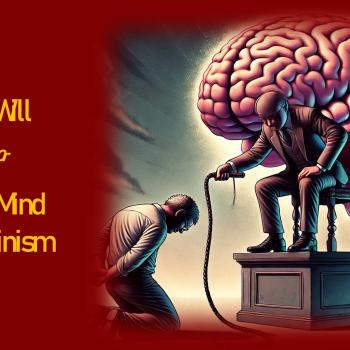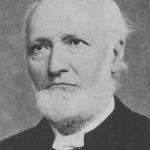The Wolves of Jack London
Jack London: The Sea Wolf
Homo homini lupus (Human is wolf to Human)

We have seen a San Francisco dog become an Alaskan wolf in The Call of the Wild. And we have seen an Alaskan wolf become a dog in White Fang. The plot in The Sea-Wolf, published in 1906, differs. Now, it’s the relationship between the wolf and the human, between our pre-Adamic evolutionary past and our civilized present. Jack London’s The Sea Wolf presents a Darwinian variant on lycanthropy.
In this causerie, what is our method of literary criticism? It’s theology-of-culture applied to science in literature. Like an oil exploration company, we are drilling a borehole to discover deep down reality. We remember T.S. Eliot’s oft repeated observation, “human kind cannot bear very much reality.” Here it is in Murder in the Cathedral. (1935).
You shall forget these things, toiling in the household.
You shall remember them, droning by the fire,
When age and forgetfulness sweeten memory
Only like a dream that has often been told
And often been changed in the telling. They will seem unreal.
Human kind cannot bear very much reality.
Intuitively, London seems to have observed that our civilized neighbors are in denial about the reality of their true nature. On the one hand, we ask both our moral codes and our police force to protect us from violence. On the other hand, we weekly watch hours of movies and television dramas portraying fighting, war, decapitation, blood flowing, and explosions unending. We are hiding our inner wolf. But, London wants let the inner wolf out of our cage of denial so we can confront our reality.

Within the field of Literature and Religion, we are employing discourse clarification to uncover a spiritualized naturalism behind an evolutionary mask. This is number three in our Patheos series on Jack London, looking at The Sea Wolf.
THE WOLVES OF JACK LONDON / Jack London Society
Jack London 1: The Call of the Wild
Jack London 4: Lone Wolf Ethics
Jack London 5: Wolf Pack Ethics
Jack London 6: Wolf and Lamb Ethics
Homo homini lupus
Do you recall the ancient Roman proverb, Homo homini lupus, “Human is wolf to human”? How might this aphorism apply to colonizing Mars?
What does Mars have to do with this? Just be patient. Note how a political scientist tries to discourage earthlings from colonizing Mars. Why? Because we hominids would export terrestrial violence to an extraterrestrial site. “An adage of the Romans, Homo lupus homini, ‘Man is the wolf of man’, sums up the grim fact that humans have been killing each other, often in great slaughters, since before the beginning of recorded history” (Deudney 2020, 145). Homo sapiens we know and love are actually wolves in human clothing. We would be wolves in human clothing whether on Earth or Mars.
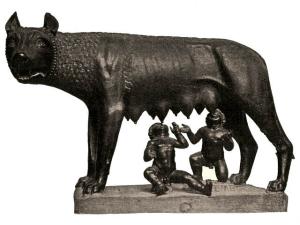
Through the lenses of Literature and Religion, let’s look briefly into this ancient Roman proverb, Homo homini lupus, “Human is wolf to human.” According to Rome’s myth of origin, the eternal city was suckled after birth–brothers Romulus and Remus–by a wolf mother. Are all Romans descendants of canis lupus?
Homo homini lupus. What does it mean? Rabbi Steve Leder answers in his Time article, “The Beasts within Us.” Leder proceeds to note that “a wolf in this case is meant to invoke something predatory, animalistic and without a conscience” (Leder 2019, 84).
But, queries Leder, does Homo homini lupus actually describe the species Homo sapiens sapiens exhaustively? Suppose we say: not every individual harbors the ravenous wolf. Only some of us do. Oh, yeh? Really? “I don’t buy it. It is too simple, too one-sided. I believe in a different wolf story. It’s a wolf story of the Native American people. The story of a chief telling his grandchildren that there is a war going on inside every one of us. It is a war between two wolves. One is the wolf of kindness, humility, sharing, rescuing and peace, and the other is the wolf of self-interest, arrogance, violence, coldness and cruelty” (Leder 2019, 87). Take a moment to drill into our your soul. Do you see a wolf down there?
The Sea Wolf
The protagonist in London’s The Sea-Wolf, Hump, looks like the first wolf. But the antagonist, a Danish ship captain, Wolf Larsen, incarnates the second wolf of self-interest, arrogance, violence, coldness and cruelty.
Or, perhaps more precisely, the enigmatic captain represents both wolves. On the one hand, Wolf Larsen reads Shakespeare. On the other hand, he savagely tortures his ship’s crew. No amount of education, sophistication, or protocol can gag the tearful cry of those who suffer from insensitivity, brutality, and violence.
When London wrote these three wolf books, he had evolution on his mind. He had survival-of-the-fittest on his mind.
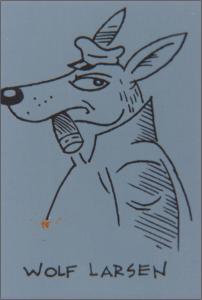
Does Darwin require nihilism? Nietzsche thought so. Does Wolf Larsen speak on behalf of Darwin, Nietzsche, and Jack London?
I believe that life is a mess….It is like yeast, a ferment, a thing that moves and may move for a minute, an hour, a year, or a hundred years, but that in the end will cease to move. The big eat the little that they may continue to move, the strong eat the weak that they may retain their strength. The lucky eat the most and move the longest, that is all. (London, The Sea Wolf 1906)
Is turning the description of nature blood “red in tooth and claw” warrant turning survival-of-the-fittest into an ethical prescription?
Note the dialogue when Humphrey van Weden, nicknamed Hump, questions Wolf Larsen about living and killing.
Wolf Larsen: “Life? Bah! It has no value. Of cheap things, it is the cheapest.”
Hump: “You have read Darwin.”
Larsen: “I have.”
Hump: “But you read him misunderstandingly when you conclude that the struggle for existence sanctions your wanton destruction of life.” (London, The Sea Wolf 1906)
Hump connects Wolf Larsen with canis lupus: “It was the wolf in him that I saw, And a mad wolf at that.”[1]
To use Darwin’s struggle for existence to “sanction” the destruction of life is what I dub Lone Wolf Ethics. To proffer lone wolf ethics, one must admit to an underlying theology. Wolf Larsen, citing the biblical Qoheleth, gives voice to a near nihilistic theology. He affirms that “all is vanity” (Ecclesiastes 1:2). Larsen speaks:
“The Preacher who was king over Israel in Jerusalem thought like I think. You call me a pessimist. Is not this pessimism of the blackest? ‘All is vanity and vexation of the spirit’…. [The Preacher] preferred the vanity and vexation to the silence and unmovableness of the grace. And so do I. (London, The Sea Wolf 1906)
By the time London was writing The Sea-Wolf, he had added Friedrich Nitzsche’s nihilist evolution to his Darwinian anthropology. Nietzsche seemed to complement Ecclesiastes. Dustin Faulstick concludes that Wolf Larsen “challenges traditional wisdom, laments the finality of death, and tries to live as well as he can in a world where ‘all is vanity’” (Faulstick 2015, 2). But vanity is perpetually caught in a tension with hints of meaning and even transcendence.
Just as Buck and White Fang lead double lives—one life as a wolf and the other as a dog—so also Wolf Larsen is afflicted by the inescapable tension between barbarity and spirituality. After his physical strength and sight has abandoned him and he is on the brink of death, Larsen murmurs, “I know truth, divine good from evil, right from wrong. My vision is clear and far, I could almost believe in God.”
But Larsen is never quite able to scrape away his materialism to expose pure transcendence. “Finally,” observes James Ellis, “Wolf Larsen dramatizes and makes tragic the theme of animal-man in the process of becoming human, torn between his old natural harmony with a materialistic world and his attraction to a new and idealistic world…torn between allegiance to his animal reason or acquiescence to his human heart” (Ellis 1978, 99).
London’s characters may want a “transcendent meaning in a naturalistic universe,” Kenneth Brandt observes (Brandt 2018, 5). But, alas, our only option is to make our own meaning in a disenchanted world.
Jack London’s Critics

Jack London had his critics, one of which was President Theodore Roosevelt. Jack London is a “nature faker,” said the president, because he “humanizes animals.”
London responded, the president is “homocentric” and a rank “amateur”, unschooled in the principles of evolution that stress kinship and “continuity” between humans and animals. The president would have to grasp evolution, charged London, before he could see the true connection between beast and human.
The Wolf with the Iron Heel
Yesterday’s wolf roars in industrial society’s oppression of the working class by the bourgeoisie. London mixed Darwin and Marx like Starbuck’s mixes strong coffee with steamed milk. Beneath the freshly cleaned clothes of the managerial class lurks the vicious brutality of the cruel capitalist. We find this in London’s novel, The Iron Heel. “’In the roar of shell and shrapnel and in the whine of machine guns will be our answer’, he couched…These…were the cool captains of industry and lords of society, these snarling, growling savages in evening clothes.”
Despite our savage past and present, London hoped for a civil future. On the eve of the 1905 revolution in Russia, Jack London delivered a commencement address at the University of California at Berkeley. It included revolutionary rhetoric. “As I look over the universities of my land today, I see the students asleep, asleep in the face of the awful facts of poverty…Oh, it is sad!…Today Russian universities seethe with revolution….Awake! Awake to its call!
Then, to two thousand more students at Harvard that same year, we hear it again. “In the United States we are able to carry on this revolution peaceably….In Russia it is not so. In Russia…the government executes revolutionaries….I am a revolutionist, yet I am a fairly sane and normal individual. …We do back up all the comrades in Russia….We are revolutionists!” One can now understand why London’s wolf books, especially The Call of the Wild, became assigned reading for school children in Bolshevik Russia and Maoist China.
Darwin and Marx? Really?

“Here then was the problem,” Jay Williams surmises. “If natural selection’s infiltration into the social sphere could not be avoided, but the law of Social Darwinism perpetuated inequality, then what could take the place of Social Darwinism?” (Williams, Author Under Sail: The Imagination of Jack London 1893-1902. 2014, 266). How about a new law of nature? How about a law that propels evolution forward toward egalitarianism?
Williams cites London saying, “All the social forces are driving man on to a time when the old selective law will be annulled….It is inexorable.” Williams then interprets this. “What makes it inexorable are the two principles of scientific socialism: the materialistic, or economic, conception of history, and the class struggle. These two tenets are revelations of hitherto undiscovered natural laws” (Williams, Author Under Sail: The Imagination of Jack London 1893-1902. 2014, 266). In short, London swapped the law of natural selection for the law of progress.
Even with this, Jack’s daughter, Joan London, criticized her father for failing to acknowledge the incompatibility of Darwin and Marx. “Stubbornly he refused to face the real issue…Poverty, he believed, forced men to live like beasts, cowering in their holes, never lifting their eyes above a narrow beast horizon. Wealth, freeing man from cowardice and animal preoccupation with the bare essentials of existence, would likewise free his mind and spirit for the pursuit of their own peculiar pleasures….He could not see that this attitude was incompatible with his socialism” (Stasz 1996, 138). Socialism is a promissory ideology that envisions a transformed future; whereas evolutionary determinism chains us to deterministic past.
“The most important force behind naturalism was Darwinian thought,” observes Jeanne Campbell Reesman (Reesman 2012, 51). But, must Darwinism reduce the future to the past? Charles Darwin and his heirs are largely reductionists, complains culturally sensitive critic James Davison Hunter.
“Darwin’s bold idea, however flawed in its particulars, remains one of the great achievements of science, and those who have followed in his footsteps have come some distance in correcting and refining the original theory. Yet what Darwin and neo-Darwinians achieved was rooted in a concern with continuities among species, in showing how human beings evolved from animal predecessors. Among later Darwinians in particular, this concern led to the conviction that human beings share the same essential nature with other species…..This increasingly exclusive focus on biological similarities tended, on the one hand, to fold the human being entirely within the continuum of the animal order and, on the other hand, to minimize, downplay, or ignore altogether the distinguishing characteristics of the human species.”
Might it be the case that the ravenous wolf lurks more dangerously in some of us rather than all of us? Might it be the case that the some of us are more highly evolved? Or, to say it differently, more sanctified by the Holy Spirit?
When we think of eschatological redemption, will we be able to embrace a future different from the past?
Plato and St. Francis on Wolves and Humans

Even without the benefit of Darwin, it appears that the ancient philosopher Plato grasped how the wolf still lives in the breast of the dominating class. In the context of discussing tyrannical political leaders the philosopher queries about a tale.
“He who has tasted the entrails of a single human victim minced up with the entrails of other victims is destined to become a wolf. Did you never hear it?”
“Oh, yes.”
“And the protector of the people is like him; having a mob entirely at his disposal, he is not restrained from shedding the blood of kinsmen; by the favorite method of false accusation he brings them into court and murders them, making the life of man to disappear, and with unholy tongue and lips tasting the blood of his fellow citizen; some he kills and others he banishes, at the same time hinting at the abolition of debts and partition of lands: and after this, what will be his destiny? Must he not either perish at the hands of his enemies, or from being a man become a wolf –that is, a tyrant?” (Plato, Republic VIII).
Watch the tyrant snarl. View the wolf. Plato perceives the wolf under the sheep’s clothing of the upper classes. London sees it in both the managerial and working classes.
Must the human race always be this way? Might we ever love more than what evolution requires?

St. Francis of Assisi sought such a love in the form of companionship and even friendship with all things wild. The animals are not merely beasts; they are our brothers and sisters. The saint addresses canis lupus:
“Friar Wolf, thou doest much damage in these parts, and thou hast committed great crimes, destroying and slaying creatures of God without His license. And not only hast thou slain and devoured beasts, but thou hast also had the hardihood to slay human beings, made in the image of God; for which thou doest merit the gallows as a thief and most iniquitous murderer. All men cry out against thee and complain, and all this city is thine enemy. But I desire Friar Wolf to make peace between thee and them: to the end that thou mayest no more offend them and that they may forgive thee all thy past offences and neither people nor dogs pursue thee anymore.”
At this, the wolf bowed his head, humbled his tail and eyes, and showed that he accepted St. Francis’ offer of peace.
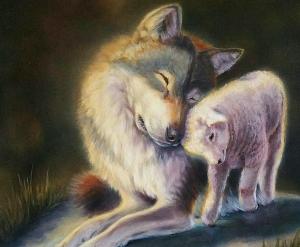
This peace between canis lupus and Homo sapiens sapiens is envisioned by the Hebrew prophet Isaiah. In Isaiah 11:6 we find an eschatological vision, a future time when “the wolf shall live with the lamb, the leopard shall lie down with the kid, the calf and the lion and the fatling together, and a little child shall lead them.” This is God’s vision of a creation which is still in the process of being created, so to speak. As of this moment, to be realistic, we can only expect the wolf to devour the lamb. This applies especially to financial forces influencing our government, to wolves in sheep’s clothing.

The scientific consensus is that life began on our planet about 3.9 billion years ago. Once life began, it’s been evolving ever since. We Homo sapiens sapiens today are genetically tied to every other life form due to our shared history and our shared genome. The past is still indelibly with us. If the dinosaurs were “red in tooth and claw,” it should be no surprise that we are too (Kean 5/6/2011).
Our destiny is inextricably tied to the destiny of animals, and plants too. Ecologists emphasize rightly that all living creatures are interdependent with all others in a single biosphere. Animals, therefore, become “our fellow passengers on this bus to who knows where. Fellow sufferers, compagnons de misère—but, if the circumstances are right, compagnons de bonheur also.”
Conclusion: The Sea Wolf
This has been an exercise by a public theologian in the field of Literature and Religion. Actually, it synthesizes three domains: literature, science, and religion.
In this series of articles on the wolves of Jack London, I’ve tried to show how the California author thought much like the Vienna psychiatrist, Sigmund Freud, “The ‘primitive, savage and evil impulses of mankind have not vanished in any individual,’ but are simply waiting for the opportunity to show themselves again.” But, is this all? Could the future provide hope?
Jack London seems innocent of a cynicism that possesses theologian Marilyn McCord Adams, who makes the same point.
Military codes of conduct and just war theory can be more accurately redescribed as bestiality containment. We resolve to rise above the beasts by committing atrocities only as allowed by the Geneva conventions” (Adams, 2018, p. 176).
On the one hand, Jack London looks backward archonically to show that our brutal pre-human or wolf-like past is still with us. At any moment, civilization can devolve into the viciousness of the wolf.
On the other hand, evolution is progressive. If evolution progresses long enough and if we advance far enough, future humanoids will jettison the wolf past and emerge in a form of biological angels. London represents a precursor to today’s ETI myth shared by ufologists, ancient alien television documentaries, and even astrobiologists. Does London get original sin but forget that without redemption there can be no utopia?
So, in a future post will look at London’s 1916 short story, “The Red One.” But, during the interregnum we will follow three paths leading to three different forms of naturalistic ethics: Lone Wolf Ethics, Wolf Pack Ethics, and Wolf ‘n’ Lamb Ethics.
▓

Ted Peters is a Lutheran pastor and emeritus seminary professor, teaching theology and ethics. He specializes in the creative mutual interaction between science and theology. He co-edits the journal, Theology and Science. His one volume systematic theology is now in its 3rd edition, God—The World’s Future (Fortress 2015). His book, God in Cosmic History, traces the rise of the Axial religions 2500 years ago. He has undertaken a thorough examination of the sin-and-grace dialectic in two works, Sin: Radical Evil in Soul and Society (Eerdmans 1994) and Sin Boldly! (Fortress 2015). Watch for his forthcoming, The Voice of Christian Public Theology (ATF 2022). See his website: TedsTimelyTake.com and Patheos column on Public Theology, https://www.patheos.com/blogs/publictheology/.
Ted Peters’ fictional series of espionage thrillers features Leona Foxx, a hybrid woman who is both a spy and a parish pastor.
▓
[1] Some interpreters find nascent androgyny in The Sea-Wolf. The triad of Wolf Larsen, Humphrey van Weyden, and Maud Brewster provide a circumincessio, of sorts, of masculinity and femininity in differing proportions. Maud Brewster, avers Sam Bassett, represents “the feminine component of the androgynous union. It seems clear, however, that Hump has, to a considerable extent, achieved such a union before Maud appears, having shed his superficial, and essentially false, effeminacy and having become more manly in the transformation detailed through the course of the novel” (Basket 1996, 101). Also in The Sea-Wolf, Humphrey van Weyden, entertained thoughts of killing his intimate female companion, Maud Brewster. Are these murderous fantasies due to van Weyden’s reversion to the wolf? No, not according to Vinnie Oliveri. Rather, “van Weyden’s homicidal impulses are part of a series of acts directed at securing masculinity for himself” (Oliveri 2001, 99). One might ask: is it not a part of the contemporary delusions of masculinity that the male of our species exhibit animal like propensities?References
Adams, Marilyn McCord, “For Better For Worse Solidarity,” Christ and the Created Order. Eds., Andrew B Torrance and Thomas H McCall. Grand Rapids MI: Zondervan, 167-178.
Basket, Sam. 1996. “Sea Change in The Sea Wolf.” In Rereading Jack London. Eds., Leonard Cassato and Jeanne Campbell Reesman, 92-109. Stanford CA: Stanford University Press.
Berkove, Lawrence. 2004. “Jack London and Evolution: From Spencer to Huxley.” American Literary Realism 36:3 243-255.
Berkove, Lawrence. 1996. “The Myth of Hope in Jack London’s “The Red One”.” In Rereading Jack London, by eds Leonard Cassuto and Jeanne Campbell Reesman, 204-216. Stanford CA: Stanford University Press.
Brandt, Kenneth. 2018. “Jack London: An Adventurous Mind.” In Jack London, by Kenneth K. Brandt. Liverpool: Liverpool University Press (Northcote).
Deudney, Daniel. 2020. Dark Skies: Space Expansionism, Planetary Geopolitics, and the Ends of Humanity. Oxford: Oxford University Press.
Ellis, James. 1978. “A New Reading of The Sea Wolf.” In Jack London: Essays in Criticism, by ed Ray Wilson Ownbey, 92-99. Santa Barbara CA: Peregrine Smith.
Faulstick, Dustin. 2015. “The Preacher Thought as I Think.” Studies in American Naturalism 10:1 1-21.
Kean, Sam. 5/6/2011. “Red in Tooth and Claw Among the Literati.” Science 332 654-656.
Labor, Earle. 1996. “Afterword.” In Rereading Jack London, by eds Leonard Cassuto and Jeanne Campbell Reesman, 217-223. Stanford CA: Stanford University Press.
Leder, Steve. 2019. “The Beasts Within Us.” Time Special Edition on The Science of Good and Evil 84-87.
London, Jack. 1903. The Call of the Wild.
—. 1916. The Red One.
—. 1906. The Sea Wolf.
—. 1904. White Fang.
Lundblad, Michael. 2013. The Birth of a Jungle: Animality in Progressive Era US Literature and Culture. Oxford: Oxford University Press.
Moritz, Joshua. 2008. “Evolutionary Evil and Dawkins’ Black Box.” In The Evolution of Evil, by Martinez J Hewlett, Ted Peters, and Robert John Russell, eds Gaymon Bennett, 143-188. Gottingen: Vandenhoeck & Ruprecht.
Niebuhr, Reinhold. 1941. The Nature and Destiny of Man, 2 Volumes. New York: Scribners.
Oliveri, Vinnie. 2001. “Sex, Gender, and Death in The Sea Wolf.” Pacific Coast Philology 38 99-115.
Reesman, Jeanne Campbell. 2012. “The American Novel: Realism and Naturalism.” In A Companion to the American Novel, by ed Alfred Bendixen, 42-59. Oxford: Wiley-Blackwell.
Scott, Nathan. 1994. “A Ramble on a Road Taken.” Christianity and Literature 43 (2): 205-212.
Sinding, Mikkel-Holger S., et.al. 2020. “Arctic-adapted dogs emerged at the Pleistocene-Holocene transition.” Science 368:6498 1495-1499.
Stasz, Clarice. 1996. “Social Darwinism, Gender, and Humor in Adventure.” In Rereading Jack London, by eds Leonard Cassuto and Jeanne Campbell Reesman, 130-140. Stanford CA: Standord University Press.
Tillich, Paul. 1951-1963. Systematic Theology. 1st. 3 Volumes: Chicago: University of Chicago Press.
Williams, Jay. 2014. Author Under Sail: The Imagination of Jack London 1893-1902. Lincoln NB: University of Nebraska Press.
—. 2021. Author Under Sail: The Imagination of Jack London 1902-1907. Lincoln NB: University of Nebraska Press.




